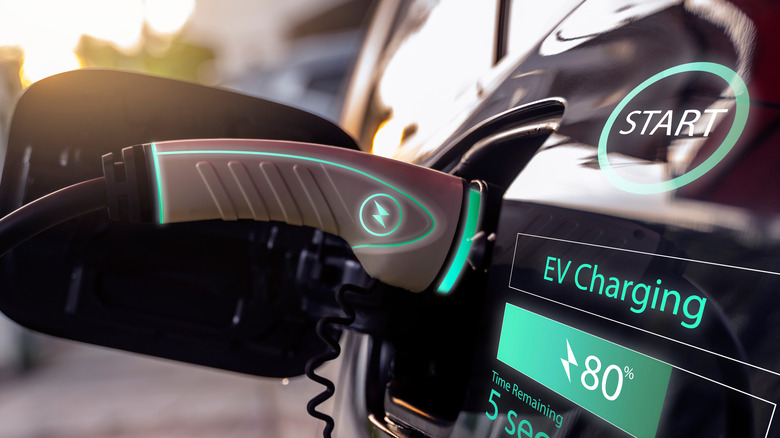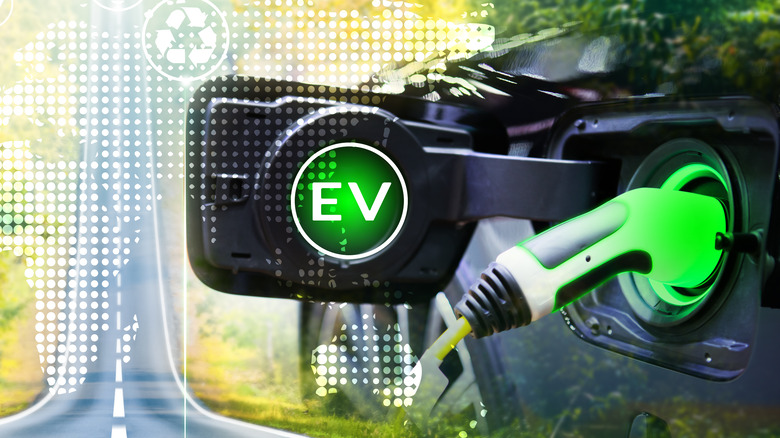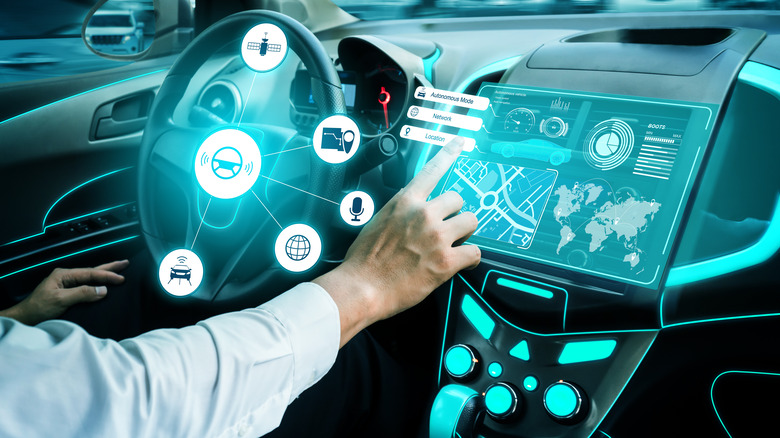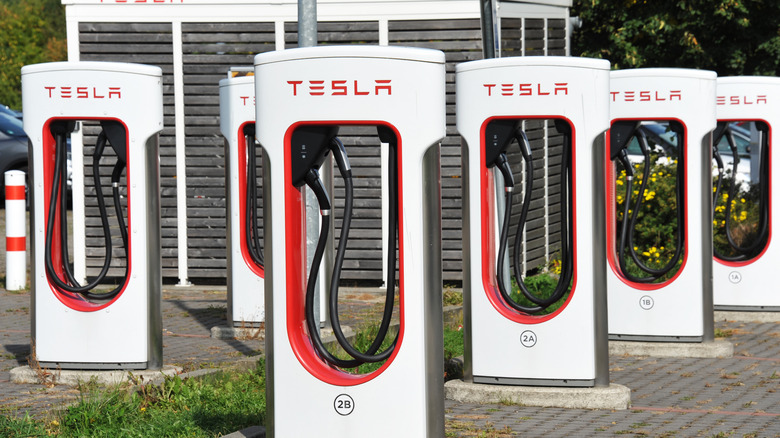The 3 Levels Of EV Charging Explained
All over the world, there seems to be an insatiable appetite for electric vehicles. The data shows that an increasing number of vehicle owners are opting for eco-friendly cars, and interest in these models has increased in light of skyrocketing gas prices. In fact, EV sales increased almost 200% in the U.S. between the second quarters of 2020 and 2021, according to data from McKinsey & Company. Electric vehicle manufacturers like BMW are taking notes and ramping up production in response to this demand. By 2030, many industry leaders expect electric vehicles will make up 52% of new car sales (via CNBC).
Unlike their gas-guzzling counterparts, EVs don't rely on typical fuel sources like gas or diesel to power their motors. Instead, these vehicles feature large battery packs that are charged either at home or using a public charging station. While that may sound straightforward enough, there are various charging options aside from location, namely the type of charger you're getting, and they're divided into three levels. Knowing which charging level is best will first require you to look at your needs, including how many miles you drive per day and whether your car is fully electric or a hybrid.
Level 1 charging
Out of the three EV charging levels, Level 1 is the most affordable way to charge your electric vehicle. This is a good option if you don't need to drive a lot, as it requires no installation for it to work. Almost all EVs come with a charging cord that features a J1772 connector on one end (that plugs into the vehicle) and a standard three-prong connector on the other end that plugs into an ordinary household wall outlet.
If you are in the United States, 120-volt outlets are common and can be found in most homes and garages. Level 1 chargers deliver around 15 amps maximum from a 120-volt socket. This is the most readily available option for most EV owners and makes it possible to charge a vehicle overnight in one's own garage. The downside to charging your EV's battery with a Level 1 charger, however, is that it is extremely slow.
For every hour spent plugged in and charging, you only get 2 to 5 miles of driving range. For that reason, you'll likely want to only utilize Level 1 charging if you own a plug-in hybrid electric vehicle (PHEV), which, according to the U.S. Department of Energy, can go only around to 20 to 40 miles on average using only battery power. After that, the PHEV will switch over to using whichever fuel type it was designed for, likely gasoline.
Level 2 charging
If you need to travel more than 50 miles per day, then Level 2 charging might be your best option. A Level 2 charger is the type that's most commonly used for everyday life — in fact, almost 80% of public EV charging stations are Level 2. These chargers have different voltage requirements and use either a 240-volt outlet — which can be found or installed in most homes — or a 208-volt connection that's mostly used in public areas like hotels and shopping centers.
Compared to Level 1 chargers, a Level 2 charger can juice up your EV's battery much faster. A single hour of charging at Level 2 is equal to 25 miles of range, according to the Department of Energy. Installing a Level 2 Charger at your residence is simple — they use the same J1772 connector that's used for Level 1 charging equipment, though Tesla vehicles have their own connector that supports Level 2 charging. If your garage isn't already wired with a 240-volt connector, you can hire an electrician to install a Level 2 charger for personal use, which will make EV ownership far more convenient.
Though they can deliver up to 80 amps of power, the Department of Energy notes that Level 2 chargers in the home typically only provide 30 amps and require a 40-amp circuit to do so. That's still double or more the paltry 15 amps you get with a Level 1 charger. With that said, the amount of time it takes to charge an EV on a Level 2 charger at home may be greater than the time it takes at a public charging station.
Level 3 charging
Finally, there's Level 3 charging, which is also called DC fast charging. You won't find Level 3 chargers in residential homes due to their lack of necessary infrastructure, not to mention these charging systems typically cost at least $15,000 at the low end. Level 3 chargers also utilize different connectors than Level 1 and Level 2 charging — the proprietary Tesla connector aside — and your vehicle must support DC fast charging to take advantage of the option.
The biggest upside to using a Level 3 charger is that it can quickly add mileage to your EV, making it possible to top up your vehicle on your lunch break or add a bit more range before heading out on a long drive. The U.S. Department of Energy estimates that every half-hour spent on a DC fast charger results in 100 to 200 or more miles of range. This is because Level 3 chargers deliver at least 100 amps and 480 volts of power — again, assuming your vehicle supports this charging option.
According to the U.S. Department of Energy, 15% of public EV charging ports in the United States are DC fast chargers. These include fast chargers in Tesla's network of Superchargers and Electrify America's growing network of DC fast chargers. Experts expect the number of fast chargers will increase as more consumers and commercial industries adopt EVs, particularly transportation companies, the long-haul trucking industry, and other sectors that need to minimize the duration that vehicles spend sitting stationary at charging stations.



